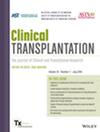Performance of Five Estimated Glomerular Filtration Rate Equations in Vietnamese Kidney Transplant Recipients: A Cross-Sectional Study
Abstract
Background
Despite the critical role of glomerular filtration rate (GFR) assessment in monitoring kidney transplants, the most accurate estimate remains uncertain. This study aimed to evaluate the performance of established estimated GFR (eGFR) equations in the Vietnamese population.
Methods
This cross-sectional study involving 299 Vietnamese kidney transplant recipients (KTRs) compared measured GFR (mGFR), determined using technetium-99m-diethylenetriaminepentaacetate (99mTc-DTPA) renal dynamic scintigraphy, with five eGFR equations (Modification of Diet in Renal Disease [MDRD], Asian modified Chronic Kidney Disease Epidemiology Collaboration [CKD-EPI], CKD-EPI SCysC 2012, CKD-EPI SCr 2021, and CKD-EPI SCr–SCysC 2021). The performances of the five eGFR equations were compared based on bias, P30 accuracy, absolute accuracy, precision, root mean square error (RMSE), concordance correlation coefficient (CCC), and Pearson's correlation coefficient (r), along with their 95% confidence intervals (CIs).
Results
CKD-EPI SCr–SCysC 2021 showed the best performance. The values for median bias, P30 accuracy, absolute accuracy, precision, RMSE, CCC, and r were: 2.57 [1.22; 3.55] mL/min/1.73 m2, 87.6% [83.3; 90.6], 10.0% [8.3; 11.7], 11.29 [9.57; 13.40] mL/min/1.73 m2, 11.54 [10.42; 12.92], 0.787 [0.737; 0.828], and 0.810 [0.759; 0.850], respectively. The MDRD equation did not show significantly lower precision and accuracy than the CKD-EPI SCr–SCysC 2021 equation. All five equations demonstrated improved accuracy in the mGFR ≥ 60 mL/min/1.73 m2 subgroup compared to the mGFR < 60 mL/min/1.73 m2 subgroup.
Conclusions
CKD-EPI SCr–SCysC 2021 is the most accurate eGFR equation for Vietnamese KTRs. Further studies with larger cohorts and comparisons with gold-standard methods are needed to confirm these findings.

 求助内容:
求助内容: 应助结果提醒方式:
应助结果提醒方式:


